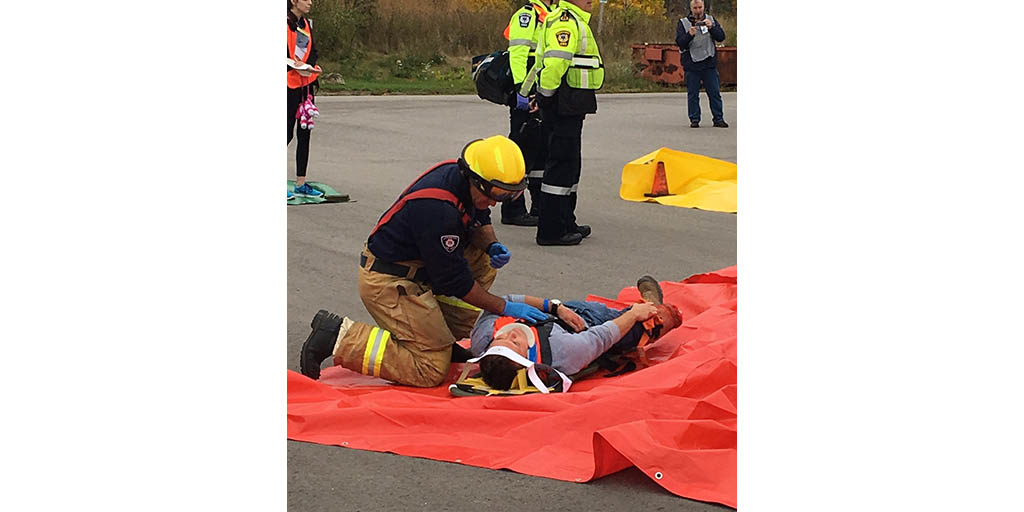Fanshawe's School of Public Safety students learn from city mock disaster scenario
 CREDIT: MARK HUNTER
CREDIT: MARK HUNTEROver 200 Fanshawe students participated in the tornado disaster exercise on Oct. 12.
On Oct. 12, Fanshawe students and emergency services participated in a mock disaster scenario around the Westminster Pond area. Participants were left in the dark on what the scenario would be until the start of the exercise, in order to test their comprehension and ingenuity.
The scenario involved a fake tornado that had touched down during a cross country meet, resulting in numerous injuries requiring medical assistance.
“The reason we do these exercises is to allow all of our emergency services to practice what to do in the event that we have a disaster occur,” Mark Hunter, chair of the School of Public Safety at Fanshawe College said.
According to Hunter, this disaster exercise was the largest one the London Health Sciences Centre (LHSC) ever participated in.
“The patients, our students, were transported to the hospital and in some cases, were processed in the emergency room. [Some patients] went right through to the operating room (O.R.) to surgical teams,” Hunter said.
To create a more realistic scenario, participants who acted as patients in the disaster exercise were given makeup to make it appear as if they had specific wounds or other injuries.
Brittany D’Angelo, a second year student representative for the paramedic program who participated in the disaster scenario as a responding medic, said she saw patients with pelvic fractures, arm amputations, lacerations to the face and chest wounds.
In addition, D’Angelo explained that some patients simulated vomiting with clam chowder soup.
D’Angelo also said that some paramedic students who acted as patients gained valuable experience learning about the pressures and trauma faced by patients in these types of scenarios.
Scott Bernaerts, a second year student representative for the paramedic program who participated as a responding medic in the disaster exercise, explained that the exercise gave students stronger experiences to draw upon when treating patients in the future.
“Moving forward onto other calls, we can relate back to the experience we had and draw upon what we learned from it, such as following the chain of command in a mass casualty incident (MCI), knowing who you are going to report to and knowing what your individual role is and how that role relates to the big picture. Having gone through that experience, I think in the event that a real disaster occurs in the future, I know that I will be thinking back to this experience and remembering what went well.”
Both Bernaerts and D’Angelo explained that the exercise was a great experience and it was beneficial to be able to see the process that emergency responders use in disaster scenarios. A lot goes on for responding medics between being dispatched and the conclusion, in which, reports are given to the nurses at the hospital.
“It was an amazing experience for the students to participate in the most life-like scenario that we have had so far,” D’Angelo said.
Hunter explained that over 200 students participated in the disaster scenario, which included students from the paramedic, police foundations, public safety fundamentals, emergency management, office administration, advanced filmmaking and emergency telecommunications programs.
“I’m so proud of our organization and our students,” Hunter said. “There were over 600 people involved in this exercise. To make all that happen in an organized, coordinated fashion is a huge undertaking. Our students played a huge role in that.”
A disaster exercise utilizing this level of realism and detail is put on approximately every five years in London.














